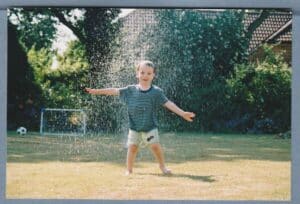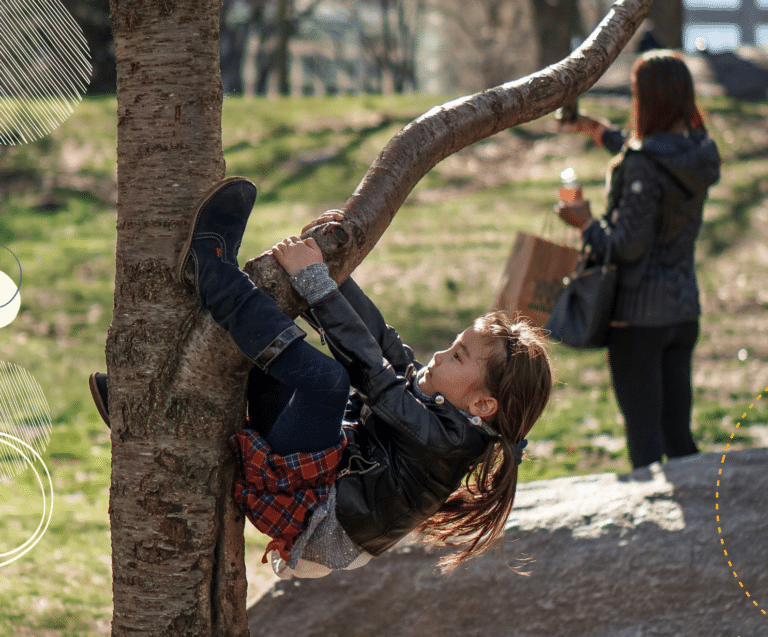Ensuring a balanced childhood in the digital age
Now, I am in no way anti-screens. As a parent, technology has been invaluable for helping my children learn, keeping them entertained, staying in touch with distant family and keeping them safe when they are out and about. However, I do believe that the omnipresence of tech in our lives is making it increasingly challenging to ensure children get a balanced childhood.
What do I mean by a balanced childhood? In essence, a balanced childhood includes all the elements that children need to support their learning, development and wellbeing. For under 12s, this would include plenty of:
- attention from a loving caregiver
- opportunities to play freely in varied and stimulating environments
- social interaction (in all its forms – one-to-one, in groups, with peers, with adults, with children of all ages)
- physical activity
- formal learning through guided activities
- reading and creating
- opportunities to grow their independence and face challenges
- life skills
- downtime to relax and recuperate
Technology can definitely support some of these elements. My son, for example, loved using a computer to extend his creativity from drawing and model-making into stop motion animation and film-making.
But tech can also get in the way of these balanced childhood ingredients. Screen-based activities have a tendency to be habit-forming and to displace other activities by squeezing out time and motivation for them. With easy screen-based boredom fillers so readily to hand, those moments when children would have done something else are easily lost.
Children need parents to draw boundaries around technology for them and make sure their screen use doesn’t expand too far (see Positive Parenting in the Digital Age for tips on parenting strategies that will help with this). But they also need us to be active and intentional in embracing a balanced childhood, to design into our family lives the opportunities that children (and adults) need to unplug, get active and connect with each other instead.
Working towards a balanced childhood for our children involves parents doing some important work:
Learn to be comfortable saying No
One of the top reasons parents give me for giving in and letting children have a phone or screen after they have said No is that their children complained or made a fuss. Children do push back at boundaries and they often forcibly express their disappointment when they can’t have what they want. If we want children to accept our decisions, then we need to accept their reactions and learn to feel OK with those responses.
It isn’t a parent’s job to stop every meltdown, tantrum or big emotion from happening. It is our job to draw boundaries based on what we believe to be right for our children and to sit calmly and confidently in those decisions. If your child doesn’t like being told that they can’t have a screen, just acknowledge how they feel and stay calm and steady. You might say something like, “I can see you are upset because I won’t let you have the phone but I’m not going to change my mind.” Then wait for the storm to pass. It will pass – and it will pass more quickly if you are consistent.
(If you want guidance on where you should be drawing those tech boundaries, see: How much tech time is too much tech time?)
Create tech-free windows
If we are going to stop the march of tech into every hour of our lives, then we need to carve out some tech-free windows where screens are not allowed. This might be through a rule about screen-free times or places. But the absolute best way to do this is by participating in an activity in which screens simply have no role.
Go for a walk or a bike ride, play a board game or a game of cards, head off for a fun family weekend camping (where there is no WiFi!). Prioritise low tech family activities so everyone can get a break from the screens and have some fun. By having real world fun with your children, you’ll also be helping to build their skills, their independence and their self-esteem.
(If they complain that they’re bored and want that screen? You might want to remind yourself Why boredom is good for children!)
Be active and adventurous together
The best real world activities for displacing screens are outdoors and/or active. After all, it’s pretty hard to use a games console if you are splashing in a swimming pool or walking up a mountain! The research shows that the more physically active parents are, the more active their children will be. So, get moving – with and without the kids – and your children will learn to value those active activities too. If you want adventure-loving kids, you need to take them on adventures!
(If you need inspiration for how to get more active, see 20 Exercise Ideas for Tweens and Fun family activities to tear teens away from tech. Or, if your kids need a bit of persuasion, check out these Books to inspire children to be adventurous!)
Leave your phone at home
The biggest challenge if you are trying to reduce screen use will be the smartphone in your pocket. Especially if you like to take photos for posterity. But once you’ve got the phone out for a photo, it’s a short step to posting it on social media and getting sucked into browsing and liking. Then, before you know it, the tween is on Snapchat and the toddler has grabbed your phone for a dose of Peppa.
Doing things with your children is a wonderful way to make memories (and happy memories add enormously to family wellbeing). But the research shows that we are far more likely to lay down a strong memory in our brains if we don’t take a photo but instead make a conscious effort to look and treasure. So, try to cultivate a habit of leaving your phone at home (or in the car or in your bag) and taking a mental snapshot using all your senses.
(Worried about how to entertain little ones out and about without a phone? Why not make A Kids’ Boredom Kit?).
Learn to value mess and noise
The other reason parents give for allowing children more screen time is that it keeps them quiet. Now, don’t get me wrong, I was single parent with a two under-5s and I know exactly how precious a bit of peace and quiet can be when you have little ones! But that quiet screen time moment is addictive all round – for you as well as for them. And if we always reach for the screen to keep children quiet or entertained, we quickly get de-skilled in how to manage that situation in other low tech ways.
If your aim is a balanced childhood, then noise and mess, dirty clothes and a bit of chaos all come with the territory. When we are overwhelmed with too much to do, it’s easy to see messy play as inconvenient and to close down the type of play that creates tidying up to do. But those are exactly the activities that keep children off screens and get them learning and developing! Water play, scavenger hunts, crafts, building a fort with cushions – these are all messy and noisy but they also a key ingredient in that balanced childhood our children so desperately need in order to thrive.
(If you really can’t bear mess and noise, invest in waterproofs and wellington boots and get outside as often as possible with these Ideas for outdoor play when it’s cold and wet or check out these 10 fun ideas for winter family time).







